Here's what's going on under that weird new AMD Zen 4 heatspreader
Check out the capacitors on Ryzen 7000.
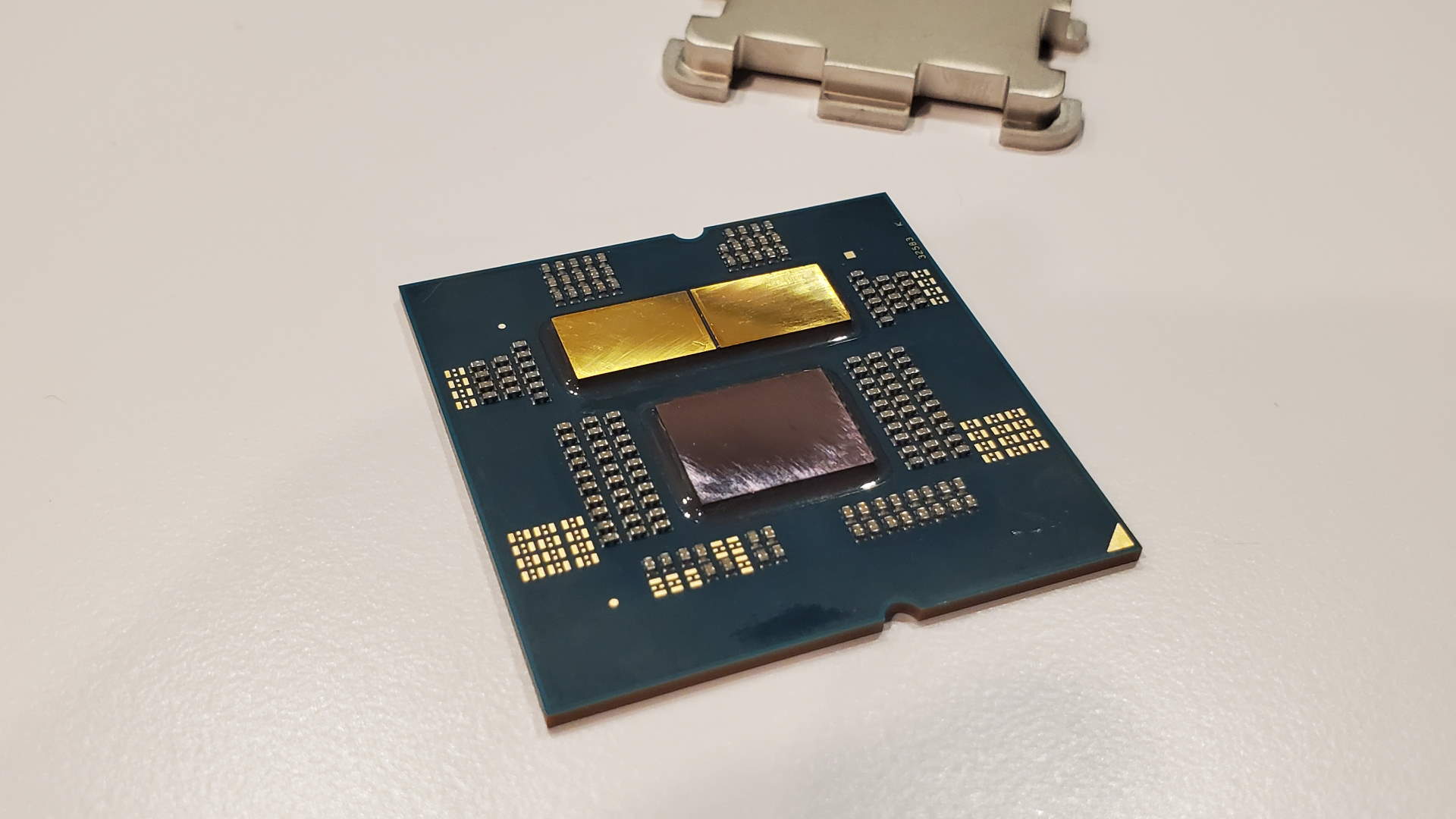
There's a lot going on under that new AMD Zen 4 heatspreader. In fact, there's a lot going on outside of it, in all those little cutouts around the edge of it, too. Somewhere you know is going to end up with a whole lot of thermal paste getting squidged in at some point down the line.
I got my first chance to get hands-on with AMD's new Ryzen 7000-series CPU at the recent Tech Day in AMD's Austin backyard. And it's a relief to finally have an AMD chip where you can't mash the pins if you get a little heavy handed with it.
Though I kinda wish they'd told me the heatspreader wasn't attached when they passed the sample over, telling me not to break it. Inevitably I did the fake drop thing, only for the chonky eight-legged heatspreader to hit the floor with a dull thud.
Still, it's good to get hold of something tangible after a long while of rumoured specs and performance figures. With the chip in hand it feels a lot more real.
And somehow this shift to an LGA socket with AM5 makes the chip feel a whole lot more grown up, too. The AM4 platform has been a real workhorse of a socket for AMD, lasting six years and hosting red team chips even prior to the Ryzen revolution. But they all still looked essentially the same as the old Athlon 64 3200+ which sat in the first gaming PC I bought with my own money.
This solid lump of CPU is a far more robust thing, though we've yet to see how well the AM5 socket itself survives against the inevitable accidental thumb-squishes that have historically blighted Intel's LGA motherboard sockets.
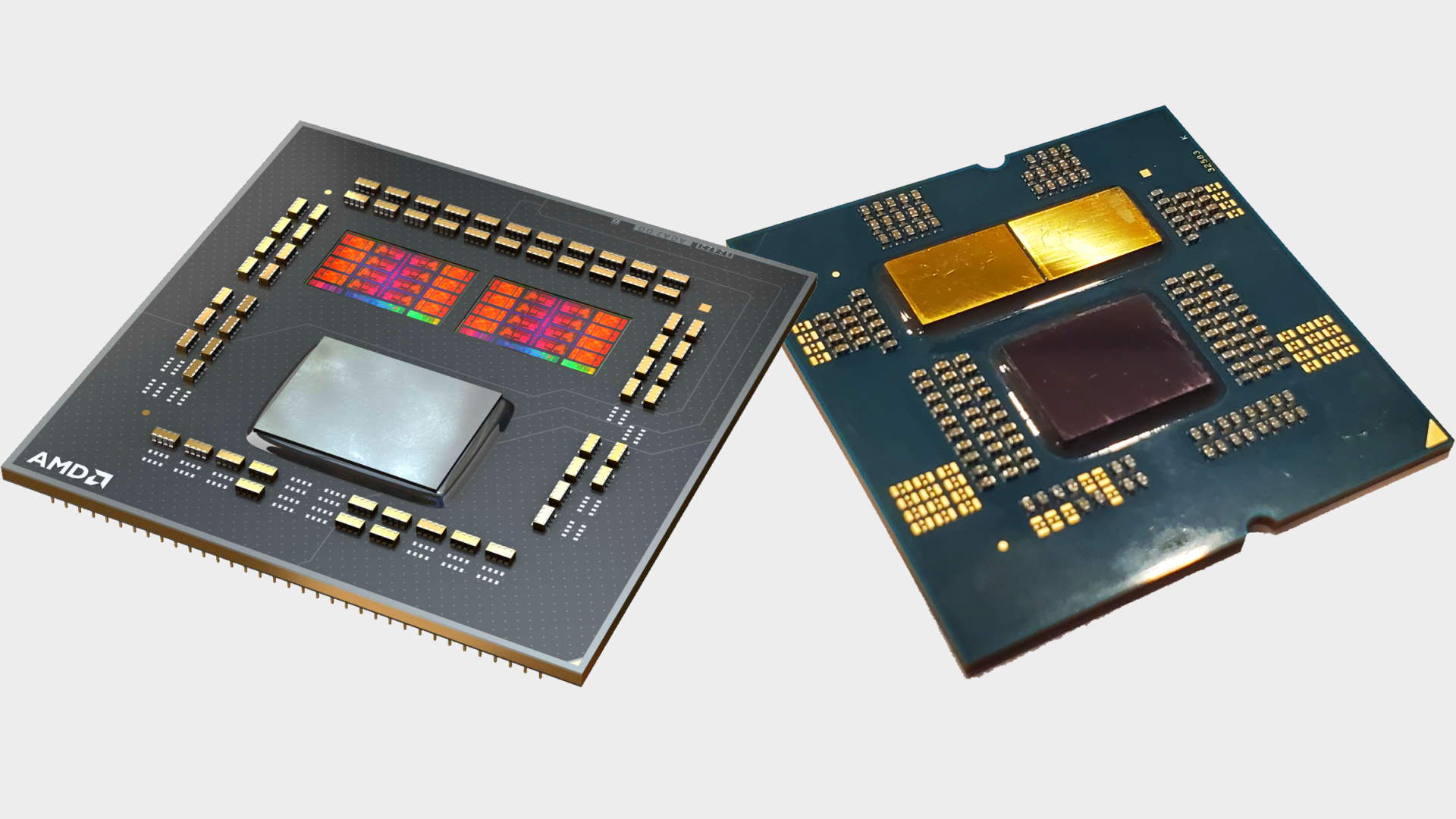
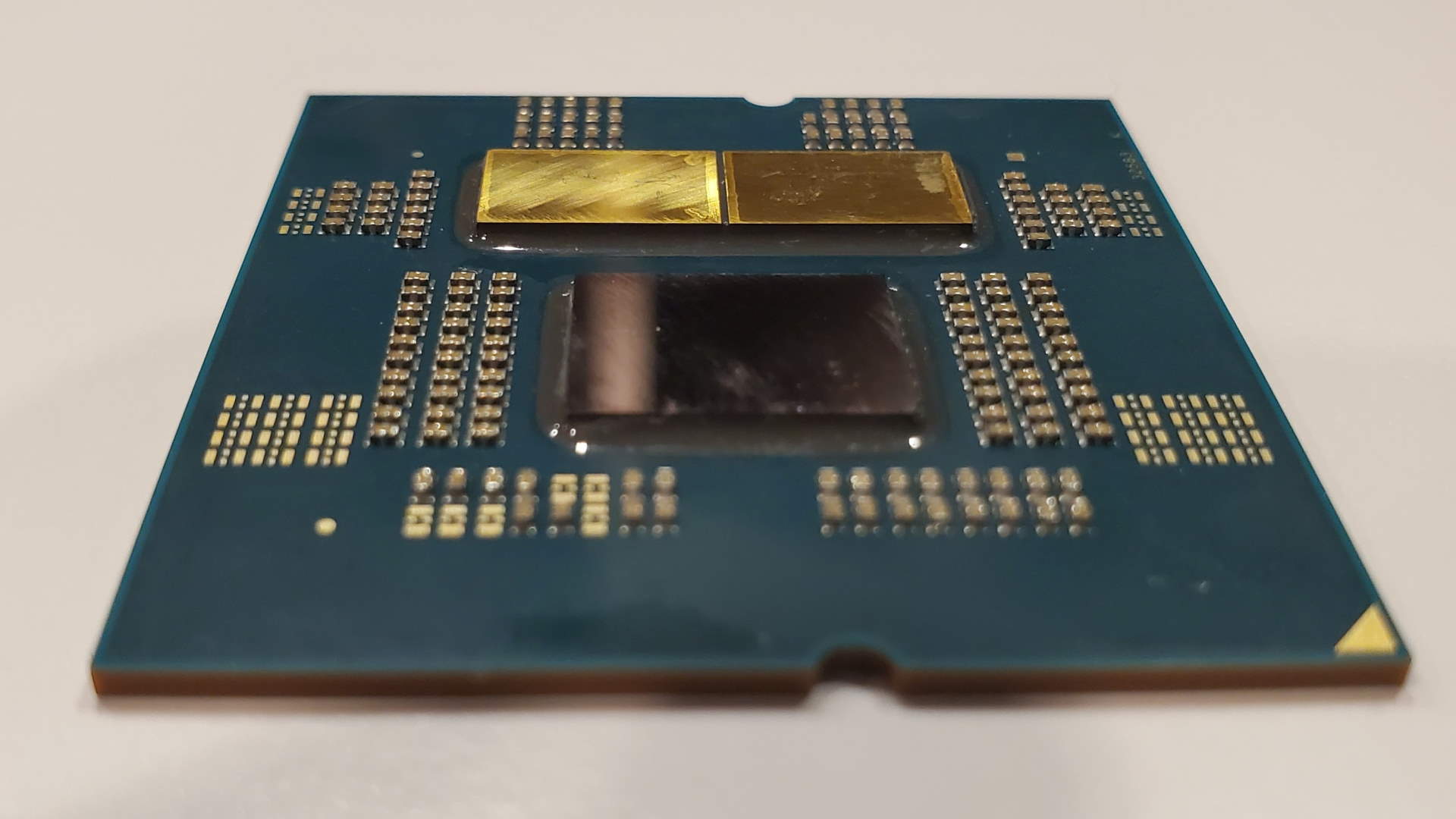
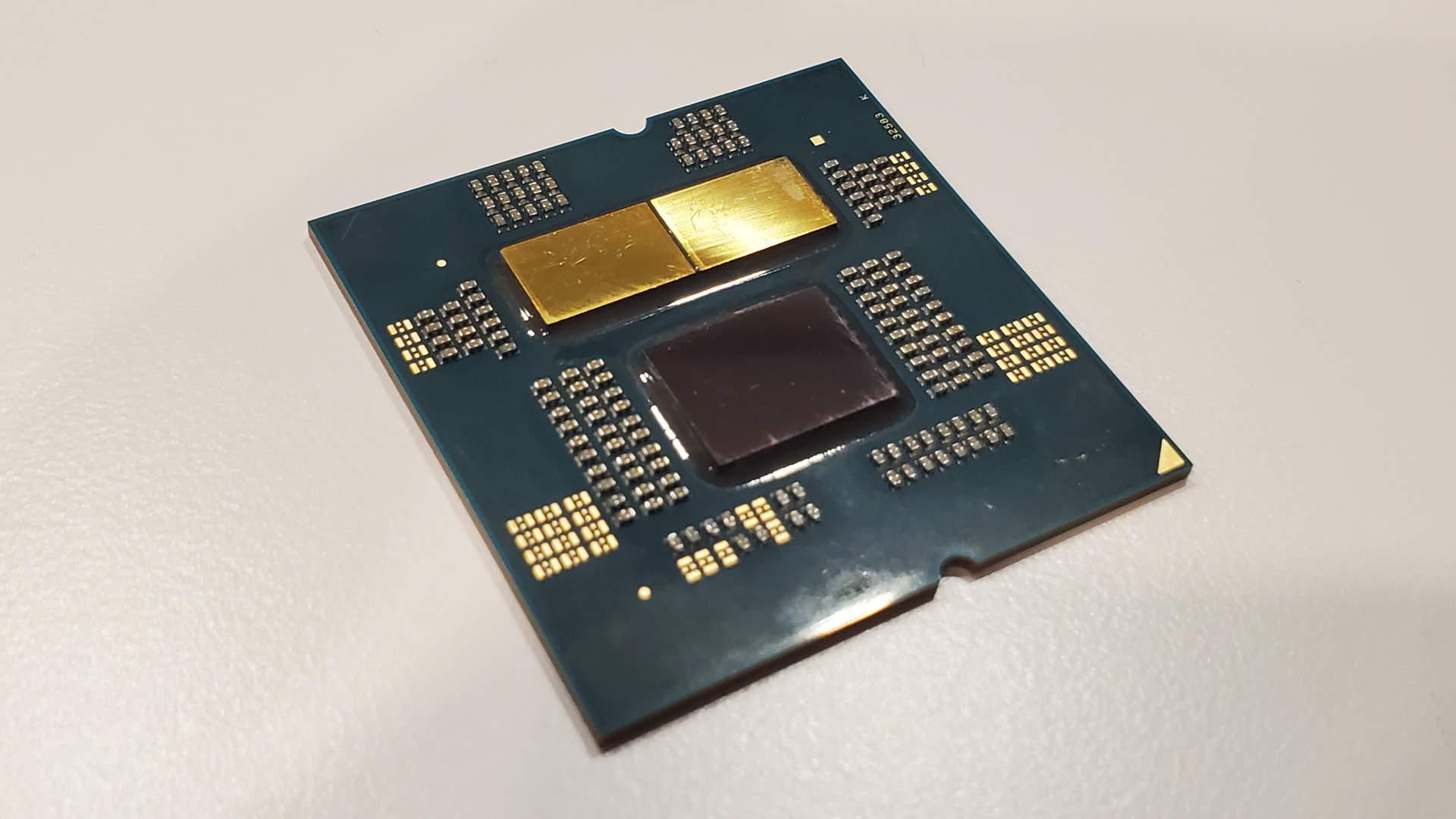
The cut-out design alone tells a story. A story of backwards compatibility and of AMD's desire to retain cooler support across the old AM4 platform by creating a new chip with the same footprint and socket keep-out zones. There's maybe some slight variation in height, however, which means coolers with a non-standard AMD backplate may actually need some sort of aftermarket spacer to support it.
The biggest gaming news, reviews and hardware deals
Keep up to date with the most important stories and the best deals, as picked by the PC Gamer team.
It's a "very unique design," says Robert Hallock at the Computex pre-brief earlier this year, "that helps us retain cooler compatibility with socket AM4. There is a real method to the design here; it allowed us to keep the same package size, the same cooler keep-out."
But, in creating a new, more powerful chip of the same size as its predecessor, AMD has needed to provide more space on the CPU baseboard to house both the two compute 5nm chiplets and the packed 6nm IO die, as well as a host of capacitors "to drive more power and greater signal integrity for all of those high-speed IOs." So says AMD's David McAfee, anyways.
AMD may have massively shrunk down the lithography used in its IO chiplet—from 12nm in Zen 3—but it's having to deal with PCIe 5.0, new AM5 DDR5 support, and house a whole RDNA 2 GPU core, too. And, as you can see from the bare chip, it's crammed as many capacitors as it can under the heatspreader, and it also needs to find places outside to fit them in.
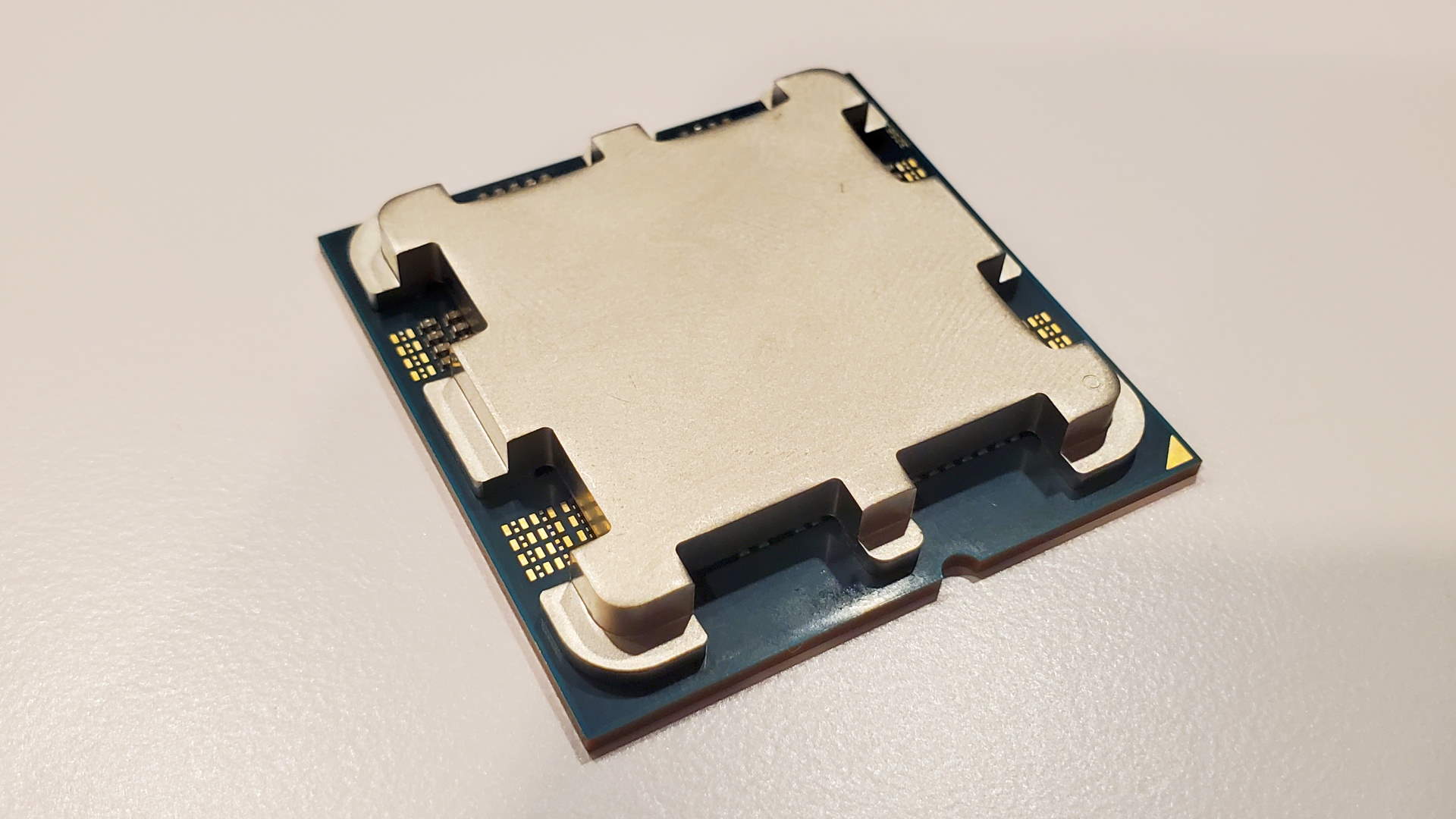
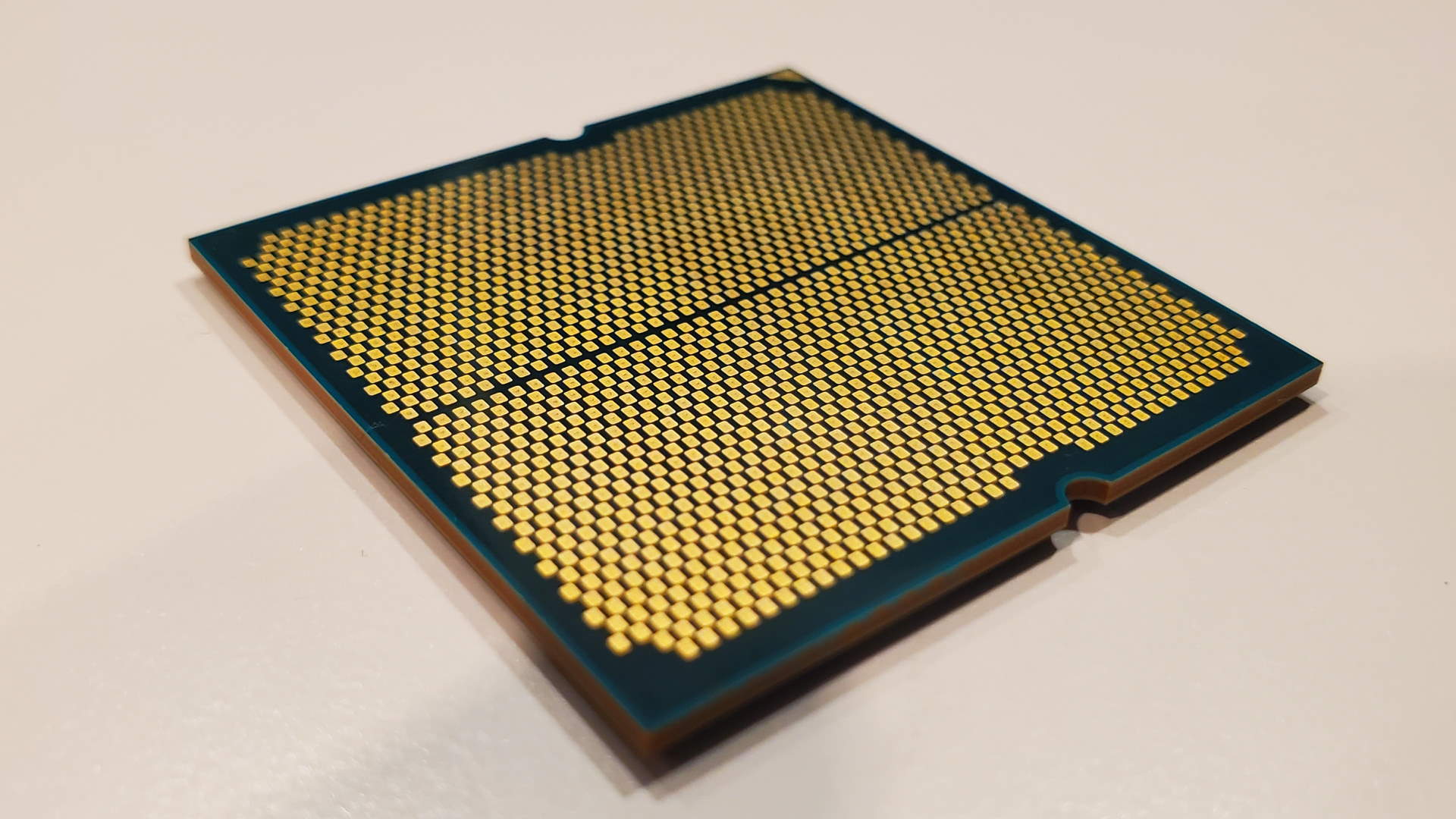
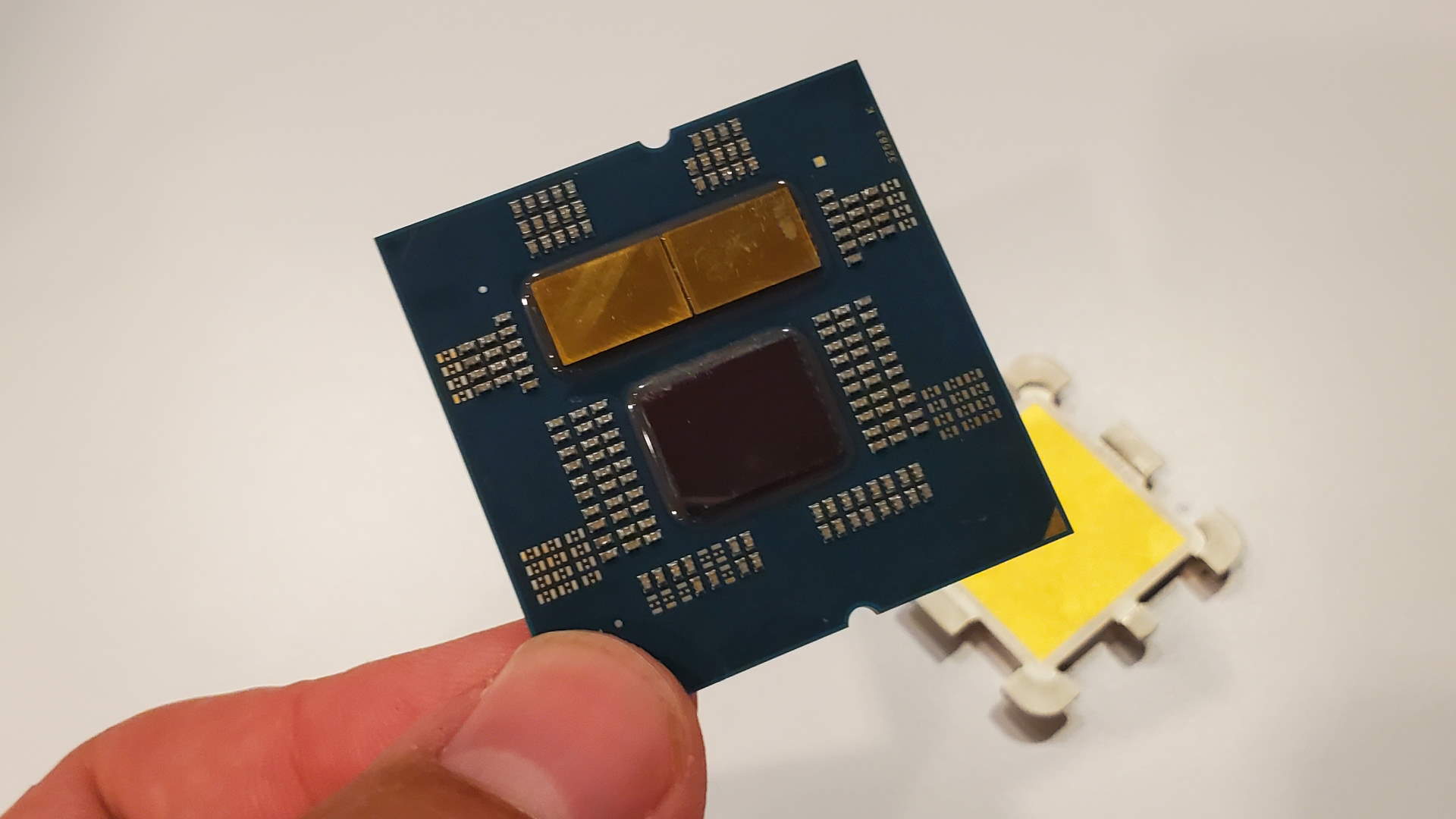
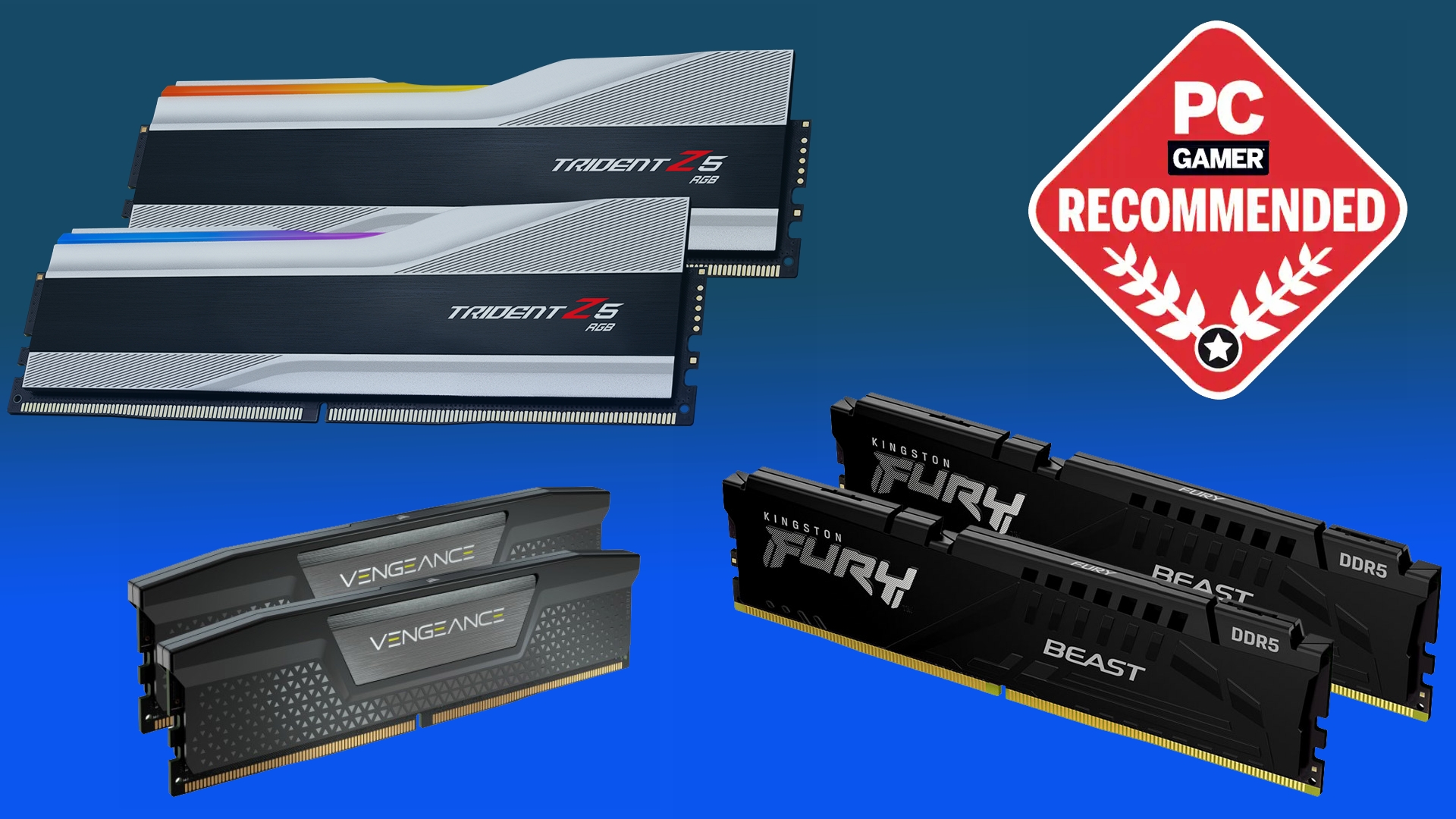
Best DDR5 RAM: the latest and greatest
Best DDR4 RAM: affordable and fast
But hey, it's a funky look, and we're sure some enterprising folk are figuring out ways to fill in those gaps and avoid a glop of thermal goop getting stuck in one of those cut outs.
This dummy chip is set up with a pair of eight-core compute chiplets, which is what we'll see in the Ryzen 9 7900X and Ryzen 9 7950X, but for the more mainstream Ryzen 7 7700X and Ryzen 5 7600X chips you'll only see one Zen 3 compute chiplet under the cover.
And how do they perform? Well, AMD has provided some preliminary numbers, but we'll have to wait until late September to find out how the new Zen 4 chips perform once they're out in the wild.
| Header Cell - Column 0 | Price | Cores | Threads | Base clock | Boost clock | Cache (L2+L3) | TDP |
|---|---|---|---|---|---|---|
| Ryzen 9 7950X | $699 | 16 | 32 | 4.5GHz | 5.7GHz | 80MB | 170W |
| Ryzen 9 7900X | $549 | 12 | 24 | 4.7GHz | 5.6GHz | 76MB | 170W |
| Ryzen 7 7700X | $399 | 8 | 16 | 4.5GHz | 5.4GHz | 40MB | 105W |
| Ryzen 5 7600X | $299 | 6 | 12 | 4.7GHz | 5.3GHz | 38MB | 105W |

Dave has been gaming since the days of Zaxxon and Lady Bug on the Colecovision, and code books for the Commodore Vic 20 (Death Race 2000!). He built his first gaming PC at the tender age of 16, and finally finished bug-fixing the Cyrix-based system around a year later. When he dropped it out of the window. He first started writing for Official PlayStation Magazine and Xbox World many decades ago, then moved onto PC Format full-time, then PC Gamer, TechRadar, and T3 among others. Now he's back, writing about the nightmarish graphics card market, CPUs with more cores than sense, gaming laptops hotter than the sun, and SSDs more capacious than a Cybertruck.

